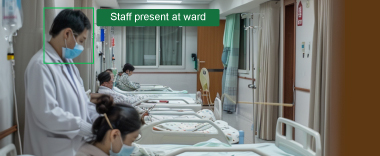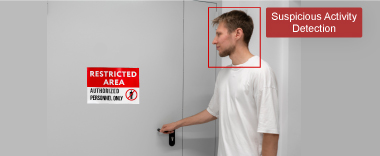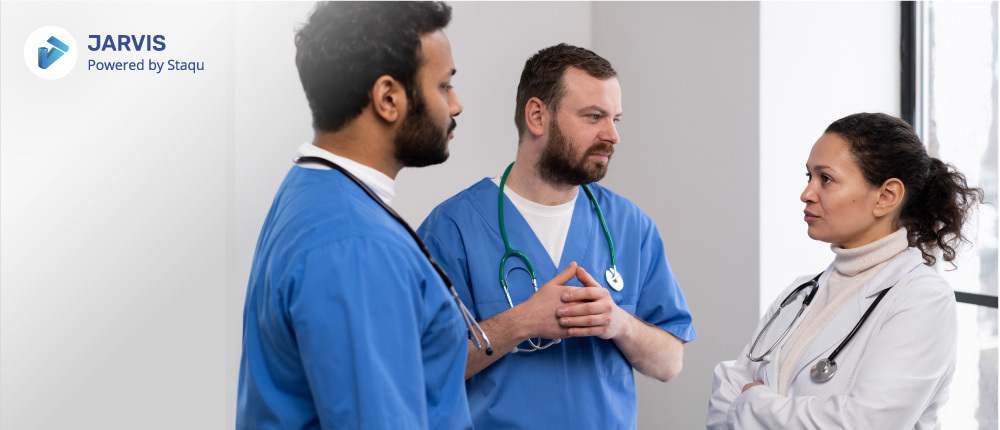Optimizing Hospital Operations with Real-Time Analytics Solutions
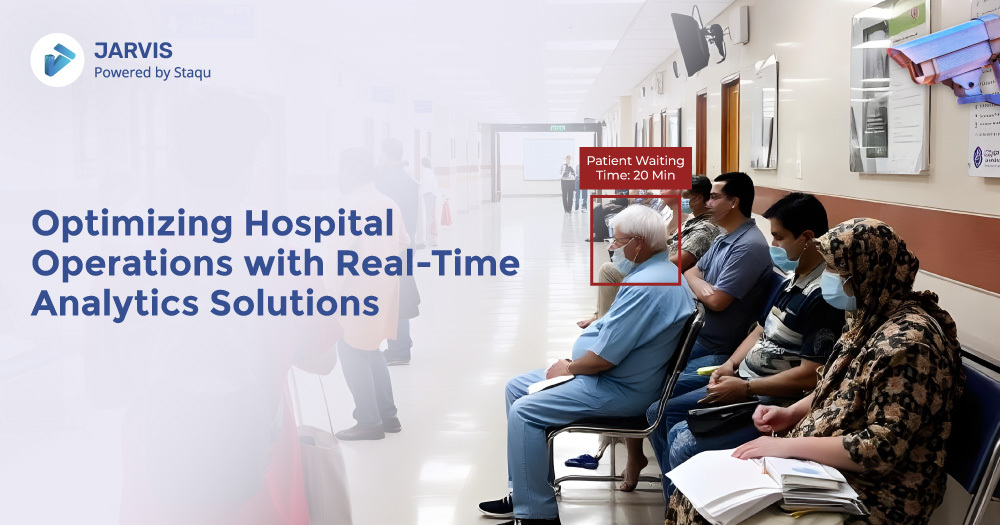
In today’s fast-paced healthcare environment, hospitals face growing challenges related to patient care, staff management, and resource allocation. The increasing demand for medical services, coupled with operational inefficiencies, often leads to delays, mismanagement, and increased healthcare costs. This is where real-time analytics healthcare video analytics steps in, offering an innovative way to address these problems.
Real-time analytics solutions, especially when integrated with powerful platforms like JARVIS healthcare video analytics software, provide hospitals with the ability to optimize operations, improve patient outcomes, and enhance resource utilization. By using advanced data processing and artificial intelligence (AI) systems, hospitals can monitor patient flow, staff movement, equipment usage, and more — all in real time. This proactive approach allows for faster decision-making and helps in providing high-quality patient care.
In this article, we’ll explore how real-time analytics and healthcare video analytics solutions can transform hospital operations, and the role JARVIS plays in making these changes happen.
Key Challenges in Hospital Operations
Hospitals, especially large facilities with multiple departments, face a wide range of operational challenges that can hinder efficiency and patient care. Understanding these challenges is the first step in realizing how healthcare video analytics solutions like JARVIS can help optimize performance.
Inefficient Resource Allocation
Mismanagement of resources, including staff, equipment, and space, is a significant issue in many hospitals. Without real-time data, administrators often rely on outdated reports or manual methods to make resource-related decisions. This leads to underutilization of some departments while others are overwhelmed.
Long Patient Wait Times
Patient wait times are a critical indicator of hospital performance. Prolonged waits can not only frustrate patients but also lead to worse health outcomes, particularly in emergency departments (EDs). In many cases, the root cause of these delays is a lack of visibility into patient flow and staff availability.
Limited Visibility on Operational Bottlenecks
Hospitals often operate at a large scale, making it difficult to identify bottlenecks such as overcrowded waiting rooms, overbooked operating rooms, or understaffed units. Without real-time insights, these issues persist longer than necessary, leading to inefficiencies.
Inconsistent Patient Flow and Bed Management
One of the most significant issues in hospitals is managing patient flow and bed availability. Fluctuations in admissions and discharges can create capacity problems, resulting in delayed care or forcing hospitals to turn patients away due to lack of available beds.
How Real-Time Analytics Can Transform Hospital Operations
By implementing real-time analytics solutions, hospitals can significantly optimize their operations and enhance patient care. JARVIS healthcare video analytics software provides hospitals with a cutting-edge tool to address operational challenges in a proactive and efficient manner.
Predictive Analytics for Resource Allocation
With real-time analytics, hospitals can predict future resource needs based on historical data and trends. JARVIS’s predictive analytics tools provide insights into patient volume, staff availability, and equipment usage, allowing administrators to allocate resources more effectively. For instance, hospitals can predict peak times for admissions or surgeries, ensuring that the right resources are in place when they’re needed most.
Patient Flow Optimization
JARVIS offers real-time monitoring of patient flow, from admissions to discharges, ensuring that bottlenecks are quickly identified and resolved. This helps prevent overcrowding in key areas such as emergency departments and outpatient clinics. By optimizing patient flow, hospitals can reduce wait times and provide timely care.
Staffing Efficiency and Shift Management
Real-time data provided by healthcare video analytics enables hospitals to create dynamic staffing schedules. By predicting high-demand periods, JARVIS helps administrators ensure that sufficient staff are available, particularly in critical areas like the ICU or ED. During peak periods, additional staff can be allocated, while non-essential personnel are scheduled during less busy times.
Monitoring and Reducing Wait Times
Long wait times can be a source of frustration for patients and a sign of inefficiency within the hospital. With JARVIS, hospitals gain real-time insights into patient wait times across departments. Administrators can use these insights to reallocate resources or adjust schedules to reduce waiting periods and improve patient satisfaction.
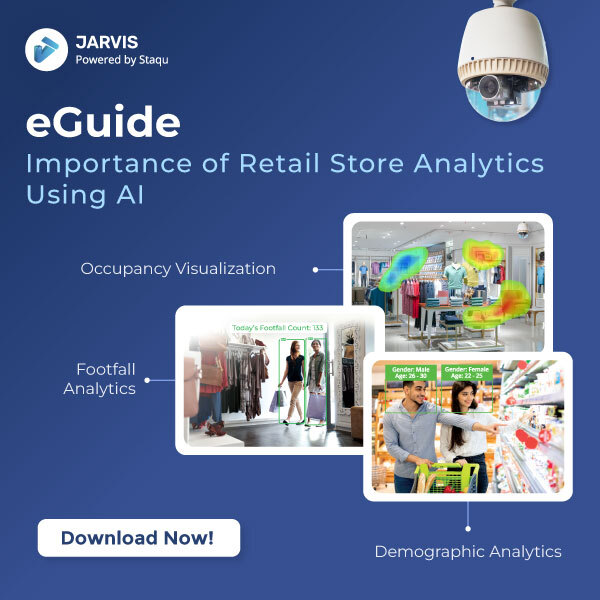
Download eguide
Applications of Real-Time Analytics in Hospital Operations
The versatility of real-time analytics and healthcare video analytics solutions allows for its application in multiple areas of hospital operations. Below are some key examples of how JARVIS optimizes different aspects of a hospital’s daily functioning.
Operating Room (OR) Utilization
Operating rooms are one of the most resource-intensive parts of any hospital. Ensuring that ORs are used efficiently is critical for both patient outcomes and hospital profitability. JARVIS’s real-time video analytics can monitor OR schedules, predict when rooms will become available, and provide alerts to the next surgical team, reducing downtime between procedures.
Emergency Department (ED) Optimization
Emergency departments are often the busiest parts of a hospital, and they require constant monitoring to prevent overcrowding. JARVIS helps hospitals optimize their ED by tracking patient flow and resource use in real time. This ensures that critical patients are prioritized, while other patients receive care without excessive delays.
Bed Management and Capacity Planning
Hospital bed management is a constant balancing act, particularly in larger facilities. JARVIS’s real-time analytics can track bed occupancy, discharges, and admissions, providing hospitals with up-to-date data on bed availability. This allows for better capacity planning and quicker response times when new patients are admitted.
Supply Chain and Inventory Management
Efficient inventory management is essential in ensuring that hospitals have the necessary supplies to care for patients. Real-time analytics help track medical supplies, equipment, and pharmaceuticals, ensuring timely replenishment and minimizing waste. JARVIS’s predictive tools allow hospitals to anticipate supply needs, avoiding shortages that could disrupt patient care.
How JARVIS Can Help in Women’s Safety
JARVIS also plays a critical role in ensuring women’s safety in healthcare facilities, a growing concern for hospitals worldwide. By implementing video analytics technology, hospitals can address both operational inefficiencies and safety issues.
Real-Time Threat Detection
JARVIS’s AI-powered threat detection system helps prevent incidents of harassment or violence, particularly in areas where female patients or healthcare workers may be more vulnerable. The system can trigger alerts when suspicious or unusual behavior is detected, ensuring a quick response.
Geofencing and Restricted Access
JARVIS can be configured to create virtual geofences around sensitive areas such as maternity wards or female healthcare worker rest areas. Any unauthorized attempt to enter these zones triggers real-time alerts, ensuring a higher level of security.
Monitoring Staff Interactions
To ensure respectful interactions between staff and patients, JARVIS’s behavioral recognition technology can analyze staff-patient interactions in real time. This system helps healthcare administrators detect any improper conduct and take corrective action quickly, thereby safeguarding women’s safety and improving patient satisfaction.
Benefits of Implementing Real-Time Analytics in Hospital Operations
The implementation of real-time analytics and healthcare video analytics offers numerous benefits for hospitals, improving both operational efficiency and patient care. JARVIS helps hospitals realize these benefits in several key areas.
Improved Patient Care and Experience
Real-time analytics allow for timely decision-making, which leads to better patient outcomes. JARVIS ensures that patients are seen more quickly, resources are allocated appropriately, and treatment is administered in a timely manner, resulting in higher levels of patient satisfaction.
Operational Efficiency and Cost Reduction
By streamlining hospital workflows, JARVIS helps reduce unnecessary delays and improves resource utilization. This leads to lower operational costs, as resources are used more efficiently and waste is minimized. Additionally, real-time monitoring ensures that the hospital runs smoothly, even during high-demand periods.
Data-Driven Decision Making
Healthcare is increasingly becoming a data-driven industry, and real-time analytics are at the forefront of this change. JARVIS enables hospital administrators to make informed decisions based on up-to-date data rather than relying on outdated reports or assumptions.
Enhanced Compliance and Safety
JARVIS also ensures that hospitals remain compliant with healthcare safety protocols. For example, its video analytics system can be configured to monitor whether staff are following hygiene protocols, such as wearing proper PPE in high-risk areas, or ensuring patient safety standards are met.
Conclusion
Real-time analytics, powered by platforms like JARVIS healthcare video analytics software, are transforming hospital operations by providing hospitals with the data-driven tools needed to optimize resource management, enhance patient care, and improve operational efficiency. From reducing patient wait times to optimizing OR utilization and ensuring women’s safety, JARVIS enables hospitals to run more smoothly and deliver higher-quality care.
Hospitals looking to stay ahead in the increasingly competitive healthcare landscape should consider adopting real-time analytics solutions like JARVIS to optimize their operations and ensure that both patients and staff benefit from a safer, more efficient environment.

